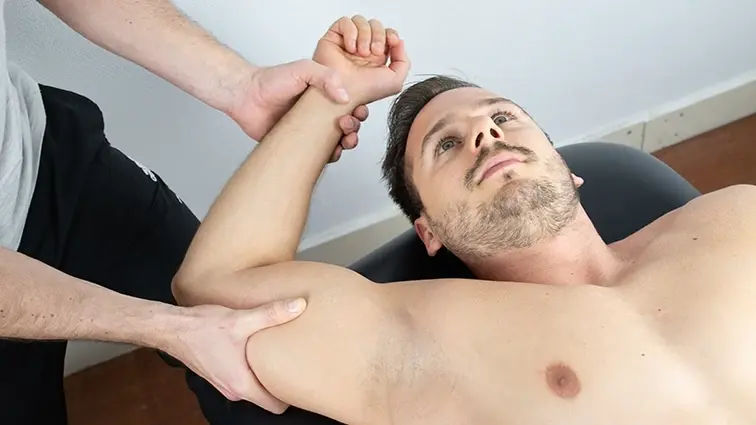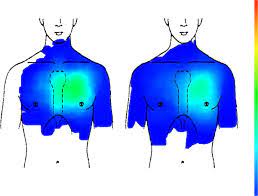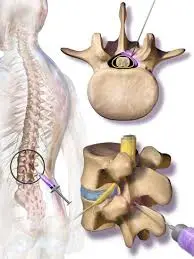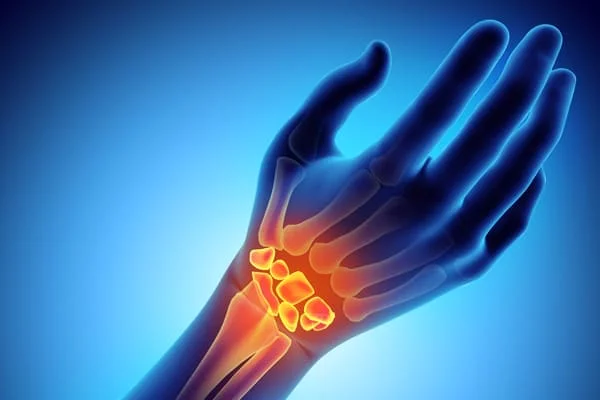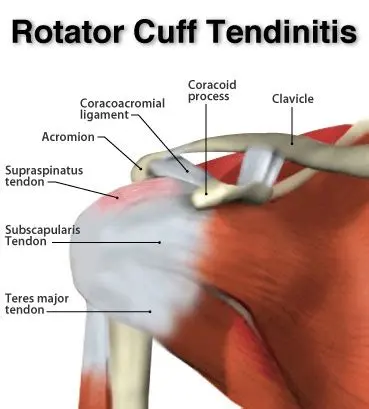Biceps Femoris Tendinopathy
Table of Contents
What is biceps femoris tendinopathy?
- Biceps femoris tendinopathy is the inflammation within the biceps femoris tendon which located to the outside of the back of the knee. The biceps femoris is one of the hamstring muscles group. Biceps femoris tendinopathy is sometimes known as the biceps femoris tendonitis. Physiotherapy is an important treatment for the biceps femoris tendinopathy.
- The biceps femoris muscle in the leg has a tendon behind & to the outside of the knee. This can become inflamed as part of an over use injury in sports that involve rapid acceleration & deceleration. Microscopic tears are accumulate faster than they can be repaired causing inflammation.
- You will feel pain in the tendons at the posteriorly to the knee on the outside. In beginning the pain is only felt following exercise, but as the condition are progresses it may become more intrusive & interfere with sports & day to day activities. Certain bio mechanical problems & tightness of the muscle make this condition more likely. In the mean time you might be avoid any aggravating activities which may prolong the problem. It generally not get better on its own. The first thing to do is the reduce the problem activities. Anti-inflammatory & ice are helpful after exercise.
- Treatment includes first confirming the diagnosis, then establishing the causes. An MRI scan can be useful for exclude others problems. Treatment options are may be include very specific physiotherapy, short wave treatment, or injections. Once you have recovered, good physio might be able to prevent this from coming back.
Tendonitis or tendinopathy?
- The term tendonitis is most commonly used, however generally this is not strictly accurate. Tendonitis refers to an acute inflammation of the tendon where in actual fact unless the injury is very recent the pain is more likely due to long-term overuse & degeneration of the tendon. A broader & more accurate term for this type of tendon injury is tendonitis or tendinopathy.
Anatomy of the Biceps femoris muscle
Introduction:
- Biceps femoris is the long muscle of the posterior aspect of the thigh. Together with the semitendinosus & semimembranosus muscles, it makes the group of muscles commonly known as the hamstrings.

- Biceps femoris muscle runs from the ischial tuberosity, all the way to the proximal portion of the fibula. In doing so the muscle crosses 2 joints; the hip joint & the knee joint. Acting simultaneously on the these joints, biceps femoris has many important functions; flexion & external rotation at the knee joint, extension & external rotation in the hip joint.
- As its name suggests, this muscle consists of 2 heads, one lying deep to the other. Each head has a different origin & innervation but they share the same insertion.
Origin
Long head: ischial tuberosity
Short head: linea aspera & lateral supracondylar line of the femur
Insertion: Lateral aspect of fibular head
Nerve supply: It is a composite muscle as the short head of the biceps femoris develops in the flexor compartment of the thigh and is thus supplied by common fibular branch of the sciatic nerve (L5, S1), while the long head is supplied by the tibial branch of the sciatic nerve (L5, S1).
Blood supply: The muscles vascular supply is derived from the anastomoses of several arteries: the perforating branches of the profunda femoris artery, the inferior gluteal artery, & the popliteal artery.
Actions: Long head: flexes the knee, extends hip, laterally rotates lower leg when knee slightly flexed, assists in lateral rotation of the thigh when hip extended.
Short head: flexes the knee, laterally rotates lower leg when knee slightly flexed.
How does biceps femoris tendinopathy occur?
- Biceps femoris tendinopathy happen most commonly in sports involving lots of acceleration & deceleration. The biceps femoris tendon transmits forces produced by the biceps femoris muscle to the lower leg to control movement of the leg at the knee joint. Repetitive use of the biceps femoris muscle &, therefore, the biceps femoris tendon can causes microscopic tears within the tendon. The body acts as to repair these microscopic tears by commencing an inflammatory response. This inflammation within the tendon is tendinopathy.
- Inflammation or degeneration of the biceps femoris tendon happen at the points it inserts into the tibia (shin bone) & fibula. This is as a result of overuse, or may also develop after a partial rupture of tendon which has not healed properly. Most commonly it is the biceps femoris tendon that is involved.
What are the symptoms of biceps femoris tendinopathy?
- Biceps femoris tendinopathy causes the gradually onset of pain felt to the outside of the back of the knee. Initially, the pain may be only present after exercise. At this stage the pain is often ignored as it is relieved with gentle motion or the application of heat. However, if you ignore the problem and continue to exercise, the tendinopathy is likely to worsen and your pain may start to present for longer periods during exercise until it is present all of the time. Symptoms may include:
- reduced range of movement
- swelling/inflammation
- stiffness
- Muscle weakness
- Tenderness & swelling over the outside back of the knee.
- Pain is likely to has come on gradually. You may have had a ‘niggle’, & restriction that you have put up with for some time.
- You may feel stiffness at the back of knee, which is often worse in the mornings, or after sitting for long periods.
- Often, when tendon warms up pain eases off, only to return later.
Assessment tests of biceps femoris tendinopathy
- A professional therapist will do a number of assessment tests & take a full case history to understand the injury. In particular, ‘resisted knee flexion’ (trying to bend the knee against resistance) may reproduce symptoms at the back of the knee. You may also show signs of tight hamstring muscles.
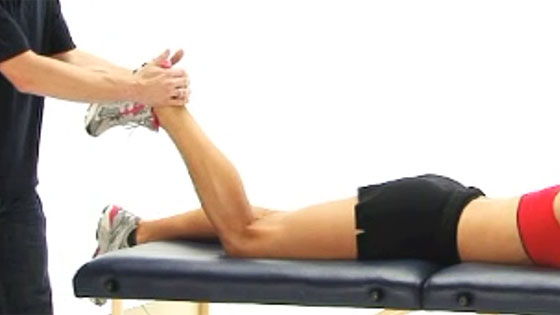
Palpation:
- Position the patient prone lying with the knee in slight flexion
- Begin distally locate the lateral proximal border of the popliteal fossa to locate the insertion of the tendon
- Palpate the hamstrings laterally to locate the biceps femoris
- Move palm toward the ischial tuberosity to locate the muscle belly of the biceps femoris
Length Tension Testing / Stretching
- With one hand, palpate the patient’s ASIS & iliac crest with the thumb & index finger
- With the other hand, hold the patient’s leg just above the ankle
- Raise the patient’s leg into hip flexion keeping the knee extended, & add an internal rotation of the tibia to bias the biceps femoris
- The flexibility of the biceps femoris muscle is exhausted when the innominate begins to rotate posteriorly
Trigger Point Referral Pattern
- Pain referred from T Rps in the lower half of the biceps femoris (long or short head) focuses on the back of the knee & may extend up the posterolateral site of the thigh as far as the crease of the buttock.
What should I do if I’ve biceps femoris tendinopathy?
- If you have biceps femoris tendinopathy you should arrange a physiotherapy appointment as soon as possible. Without treatment it doesn’t generally get better. In the meantime you can start icing the painful area for 15- 20 twinkles every 1- 2 hours using a bag of frozen peas or crushed ice wrapped in a damp cloth.
What should not I do if I’ve biceps femoris tendinopathy?
- Still, you shouldn’t ignore the problem & continue to exercise, If you suspect that you have biceps femoris tendinopathy. Although the pain may ease as you exercise; the exercise itself could be causing farther damage.However, you may find that your pain starts to worsen with exercise and your recovery may be prolonged , If this occurs.
Could there be any long- term goods from biceps femoris tendinopathy?
- Still, biceps femoris tendinopathy can lead to prolonged pain at the reverse of the knee and a prolonged lay- off from exercise and sport, If left diagnose and undressed.
Differential Diagnosis
- On examination the patient, the physiotherapist possibly has to differentiate between different injuries e.g.Adductor strains, avulsion injury, lumbosacral referred pain syndrome, piriformis syndrome, sacroiliac dysfunction, sciatica, Hamstring tendinitis & ischial bursitis.
- Other sources of posterior thigh pain could also be confused with hamstring muscle pull & should be considered during the examination process. Specific tests & imaging are used to assess & exclude those different pain source possibilities.
- Sciatic nerve mobility limitations can contribute to posterior thigh pain & adverse neural tension could in some cases be the only source of pain without any particular muscular injury. In some cases it is difficult to determinate whether it is the Hamstrings or other muscle groups like hip adductors (eg. M. Gracilis and M. Adductor Magnus & Longus.) that are injured due to their proximities. Many times imaging procedures may be required to determinate the exact location of the injury.
- Other conditions with same presentations as hamstring muscle pull are strained popliteus muscle, tendonitis at either origin of the gastrocnemius, sprained posterior cruciate ligament, astrophysicist-pain in ischial tuberosity, Lumbar spine disorders & lesions of the upper tibiofibular joint.
- Biceps femoris tendon avulsion is where the tendon pulls a small piece of bone away with it.
- Hamstring strain is a tear to any of the hamstring muscles.
How to Treat Biceps Femoris Tendinopathy:
- Identify which activity that causing the problem, & stop the activity. Remember that this is an overuse injury, so it’s likely to be the activity do the most regularly.
- Use ice to the site where the pain is located. Apply for 5 to 10 minutes 3to 5 times per day. The ice will help to reduce inflammation & allow the joint the time it needs to rest & recover after an injury.
- Avoid hamstring stretches. Stretching can separate the muscle fibers, & cause more inflammation. Avoid stretching for at least 2 weeks or until advised by physical therapist.
- Get physical therapy twice per week or else every day if you are an elite athlete. Massage, ultrasound, LASER & acupuncture can all help stimulate blood flow & encourage healing.
- Don’t sit for extended periods of time. The pressure of sitting can irritate the pain under buttock, especially on a hard chair. Get up & move regularly.
- Adequate rest is a required.
- Use of ice or the cold therapy.
- Consultation with the sports injury professional.
- Anti-inflammatory medications can be used for reduction of pain, swelling & inflammation.
- Ultrasound & laser has been found to be beneficial.
- A comprehensive rehabilitation program with exercises focusing on stretching & strengthening is beneficial.
- Eccentric training is found to be quite helpful for treatment of the tendinopathy.
- Massage therapy is also to be found quite beneficial.
Tips:
- It is quite normal to feel a squeaking or clunking in knee when you bend it, or squat.
- 3 days after you no longer have pain, starnctional strengthening exercises.
- Tenderness & pain under the buttocks & along the outside of the knee all signal biceps femoris tendinopathy.
- When you experience pain under buttock while running or sprinting you need to be checked for biceps femoris tendinopathy.
Medical treatment:
- Ibuprofen and other non-steroidal anti-inflammatory drugs (NSAIDs) can help relieve pain and reduce swelling in the leg. Some doctors prefer other medicines like acetaminophen.
- Talk with your doctor about what you should take.
- Do and strengthening exercises.
- Slowly adding some exercises can help to improve your leg’s strength and flexibility (and, perhaps, prevent the injury from happening again).
- A doctor, athletic trainer, or physical therapist can help determine when your hamstring is ready for these exercises.
- If you have a complete tear of one of your hamstring muscles or tendons, your doctor might want you to have surgery to reattach the tendon to the bone or fix the tendon.
Surgical Treatment
- Surgery is most often performed for tendon avulsion injuries, where the tendon has pulled completely away from the bone.
- Tears from the pelvis (proximal tendon avulsions) are more common than tears from the shinbone (distal tendon avulsions).
- Surgery may also be needed to repair a complete tear within the muscle.
Procedure:
- To repair a tendon avulsion, your surgeon must pull the biceps femoris muscle back into place and remove any scar tissue.
- Then the tendon is reattached to the bone using large stitches or staples.
- A complete tear within the muscle is sewn back together using stitches.
- Not overdoing things is key when it comes to this type of injury.
- Many people have a biceps femoris strain come back because they returned to play too quickly.
- So follow your doctor’s advice and don’t push yourself or feel pressure to get back into sports or other activities .
Physiotherapy treatment
Rehabilitation for Biceps Femoris Tendinopathy
Aims of Rehabilitation:
- Reduction of pain & inflammation.
- Stretching of the muscles to regain mobility & flexibility.
- Muscle strengthening.
- Gradual return to the full activity.
Reducing Pain & Inflammation of Biceps Femoris Tendinopathy
- Activities or exercises which have the potential to worsen the injury need to be avoided. The injury can be further aggravated if the affected individual works at a place where has to stand for a long period of time. Sufficient rest period if imperative at least till a stage when the acute injury passes off. The acute stage of the injury is the first 48 hours of the injury. This stage may get prolonged with use of the injured tendon & inadequate rest. To know if the acute stage of the injury has passed, the patient needs to flex the knee & if there is no pain experienced then it signifies that the acute stage has passed.
Cold therapy: If the injury is recent or acute then rest & apply ice or cold therapy for 10 to 15 minutes every hour for the first 24 to 48 hours.
Knee supports:
- Wear an elastic type of support to help reduce any swelling & support the knee joint.
- Later, once the initial acute stage has passed, or if the injury is a long-term chronic condition then applying heat & wearing a heat retainer type knee support is likely to be more beneficial.Massage
Massage:
- Cross friction massage techniques are applied to the tendon are sometimes used. Deep tissue massage to the hamstring muscles themselves helps improve the overall muscle condition.
Soft tissue mobilization:
- Performing soft tissue mobilization via IASTM to gluteals, IT band, Quadriceps, adductors & hamstrings, twice per week for 3 weeks helps in improving the knee extension range of motion among patients suffering from decrease in flexibility or decrease movement range due to soft tissue limitations.
Electrotherapy
Applying ultrasound or laser treatment can also help with the inflammation & healing process.
- Can be applied after 24 hours, for the first week.
- At the same time, ice treatment should be continued.
- Then, from the second week, alternate heat and cold should be introduced.
- Heat encourages bleeding so it should not be used in the early stages.
- However, at later stages, it will encourage blood flow and healing.
- Heat also helps with muscle relaxation, which in turn can help with pain relief.
- Heat wheat packs are ideal for home use.
Following suggestions will be helpful :
- Completely rehabilitate a hamstring injury before returning to activity.
- Always include a general warm up, followed by an activity specific warm up before training and especially competition.
- Cool down thoroughly after training and competition.
- Include an eccentric strength training program (muscle contraction and lengthening at the same time) for the hamstrings.
- Practice balance, agility and proprioception drills to improve knee and hip stability.
- Reduce the frequency of, or stopping completely, any activities that aggravate the hamstring.
- Rest in between training sessions or competition allows the body to heal minor injuries and repair the muscles to be ready for the next round of activity.
Exercises
- Once pain & swelling have gone, stretching & strengthening exercises can begin to restore the muscle & tendon to full fitness & make it stronger to prevent the injury from recurring.
- Gradually increase the load through the tendon so it can be cope with the normal demands of sports.
- Eccentric exercises where the muscle contracts as it lengthens are very beneficial in treating tendinopathies.
- Exercises to strengthen the hip muscles, in particular the large gluteus maximum muscle may also be beneficial.
Stretching exercise of hamstring muscle

1.Hamstring muscle stretch:
- Sit on the ground with both legs are out straight.
- Extend the arms & reach forward by bending at the waist as far as possible while keeping the knees straight.
- Hold this position for 15-30 seconds.
- Relax back into the starting position.
- Repeat three times.
Be sure to stretch until a moderate pull is felt in the back of the thighs. If you are feel any excessive pain, you might be stop the exercise.

2. Hurdler hamstring muscle stretch:
- Sit on the ground with one leg are out straight.
- Bend the other leg at the knee & position the sole of that foot against the opposite inner thigh.
- Extend the arms & reach forward over the one straight leg by bending at the waist as far as possible.
- Hold this position for 15 seconds.
- Relax and than Repeat with the other leg.
3. Standing hamstring muscle stretch( Both legs are together):
This hamstring stretch is a simple one to do anywhere at the all. It is done in the standing position & stretches both legs at once. Here is how you to do the standing hamstring stretch:
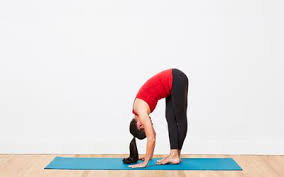
- Stand & cross the right foot in front of the left.
- Slowly lower the forehead to the right knee joint by bending at the waist.
- Keep the both knees straight.
- Hold this position for 15-30 seconds.
- Relax and then Repeat for the other side by crossing the left foot in front of the right.
4.Standing hamstring muscle stretch (one leg at a time)
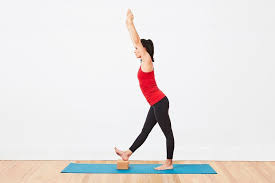
The one-legged standing hamstring stretch is completely possibly the easiest hamstring stretch to do. It can be done anywhere home, office, or outdoors & it requires no special tools.
- Stand up the straight with one heel resting on a small stool. if it is outside, one can use the curb, but be sure to watch for cars.
- Keep the knee straight.
- Reach both arms up toward the place where the wall & ceiling meet. If outside where there is no wall and ceiling, when simply reach up into the air so that the arms are about even with the ears. Reaching the arms up and as opposed to reaching down toward the foot, will keep the back straight.
- Keep the back straight & One should be bending forward slightly from the hips.
- Reach the forward & feel a stretch in the hamstring behind the thigh.
- Hold this position for 15-30 seconds, & repeat 3 times.
5. Runner’s hamstring stretch
The runner’s stretch is a common flexibility exercise for hamstrings
- Stand one foot from a wall & place the hands on the wall at shoulder height, shoulder width apart.
- Take a step back with 1 leg while pushing into the wall
- Keep the back straight & press the heels into the floor.
- Hold for 15-30 seconds.
- Step forward and the repeat with the other leg.
- Repeat the exercise 3 times on each side.
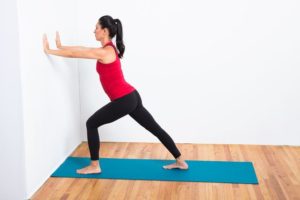
6.Stretching
- Position of patient is side lying & support is provided to lower leg with hip & knee flexed
- Hold the upper leg & bring into abduction
- During abduction, try to support the leg against your body, so that the patient can extend the knee whilst pressing the hip into flexion
- With one hand, hold the upper leg & with thenar of your other hand try to provide stretch to the muscle away from the site of insertion
Quadriceps foam rolling:
- The foam rolling to quadriceps alone is effective in decreasing the activation of biceps femoris muscle. Foam rolling on patients muscle can lead to alteration in range of motion, performance & muscular co-activation around the particular joint. According to the researcher, when there is simultaneous contraction of the agonist and antagonist muscle, it helps in providing stability to the knee joint. However, if any disturbance occurs to the stability of the joint, the knee particularly goes for injury.
- Furthermore, the study portrays about ACL injury, which is more common due to alteration in muscular co-activation, & further research is required to identify the efficacy of foam rolling on activation of muscle around the knee joint.
Strengthening exercise of hamstrings muscle:
- Strengthening exercises should be done to gradually & progressively increase the load through the tendon. This is important to prevent injury recurring. Simply going straight back to normal training levels as soon as are free of pain is not a good idea.
- Strengthening exercises can start as soon as they can be done without pain. This may be after the first 48 hours or it may be up to a week prior to strengthening can begin.
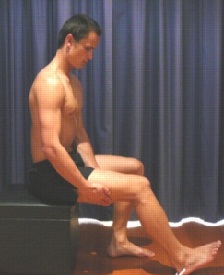
- There might be a gradual progression. Once you can cope with the easy exercises without pain during, after or the following day, then move onto a more difficult exercise.
- Strengthening exercises should continue long after feel the injury has recovered.
1. Static Hamstring contraction
- Start this exercise in sitting with the knee bent to about 45 degrees.
- Press the heel into the ground tightening the back of thigh.
- Hold for 5 seconds & repeat 10 times as hard as possible pain free.
2. Bridging exercise

- Start this exercise lying on the back in the supine position.
- Gradually, lift the bottom pushing through feet, until the knees, hips & shoulders are in a straight line.
- Tighten the back of the thigh while performing this exercise.
- Hold for 3-5 seconds then slowly lower the bottom of the back down.
- Perform this exercise 3 sets of 10 repetitions provided the exercise is pain free.
3. Single leg bridging
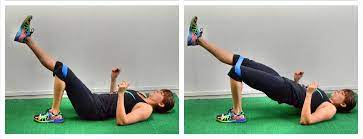
- Lie flat on the back with the knees bent & feet flat on the floor. The feet & knees might be hip distance apart.
- Tighten the abdominal muscles slightly to engage the core and stabilise the lower back.
- Lift up into simple bridge position but as one hold the bridge position, lift 1 foot off the floor & extend the knee as shown.
- Hold for 3-5 seconds, bring the foot back down, & then lower the buttocks to the floor.
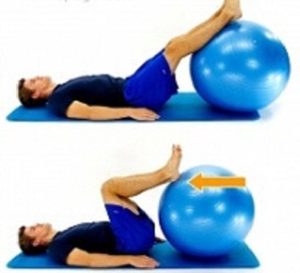
4. Hamstring curls with gym ball:
- Lies on the back with the feet & lower calves resting on a gym ball with knees straight & arms crossed over the chest.
- Slowly curl the ball towards the body by bending the knees & then slowly roll the ball away
- Repeat this exercise for 10 times.
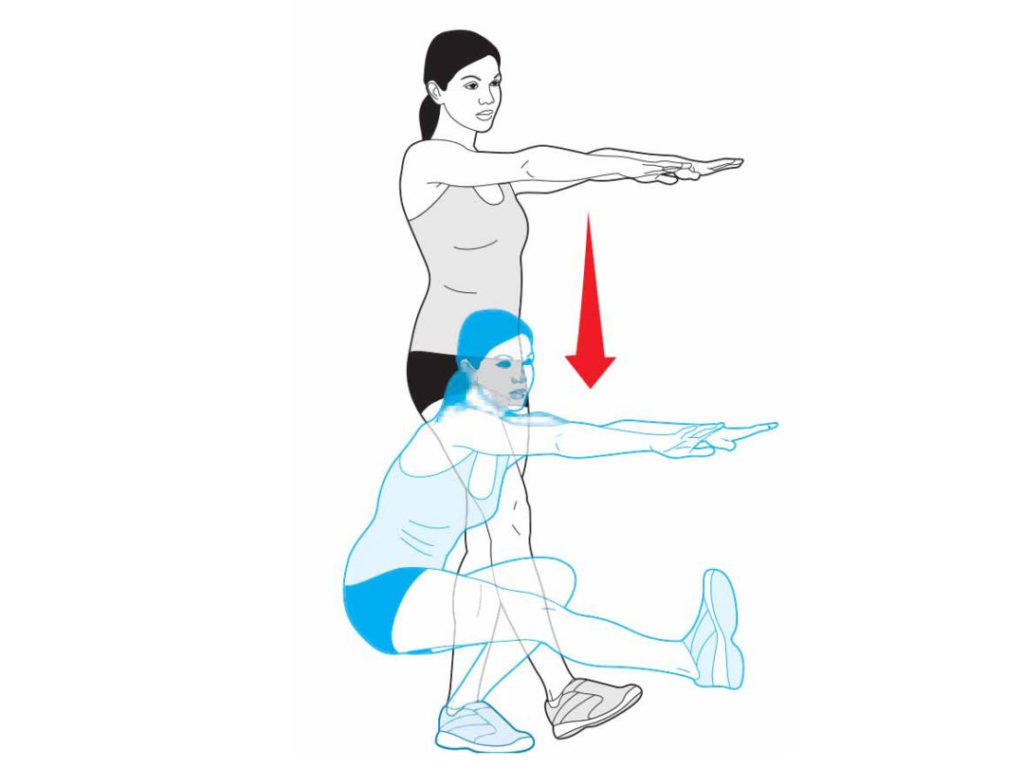
5.Pistol Squat (With Optional Plyo)
- Stand holding your arms straight out in front of your body.
- Raise your right leg off the floor in front of you.
- Keeping your right leg straight, push your hips back and lower your body as far as you can without breaking form.
- As you do this, raise your right leg so that it doesn’t touch the floor, and keep your torso as upright as possible. Pause, then push your body back to the starting position.
- Do equal reps for each leg. For a bigger challenge, as you rise out of the squat, add in a jump off your planted leg.
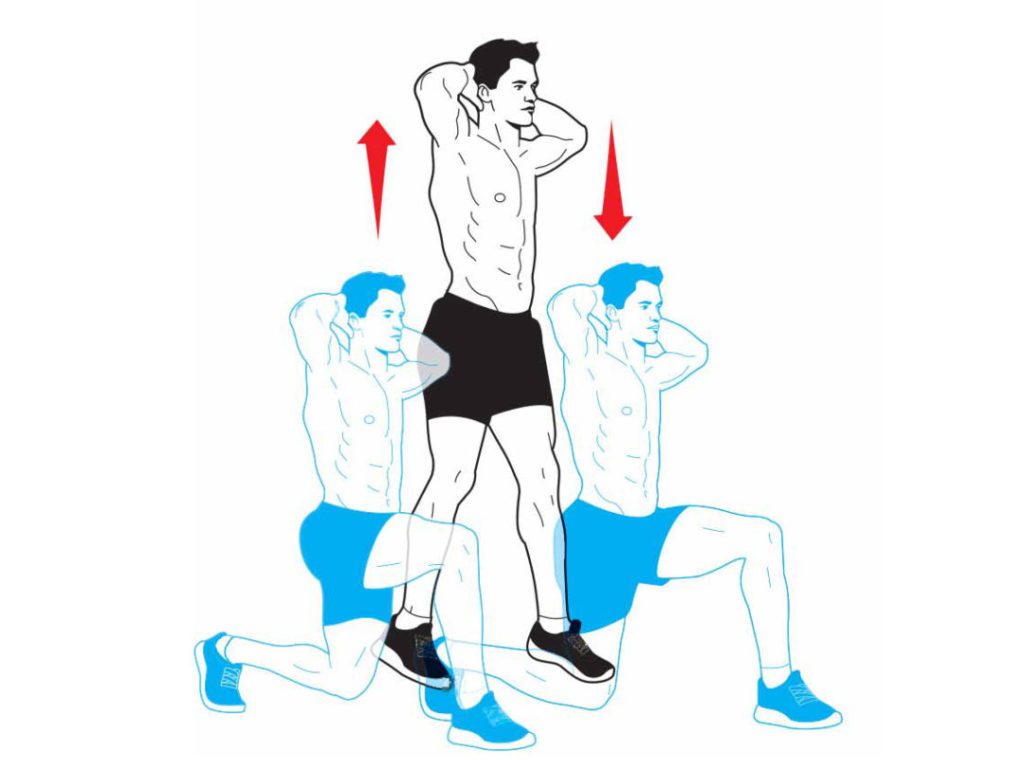
6.Split Jumps (With Or Without Dumbbells) :
- Stand in a staggered stance, your right foot in front of your left.
- Lower your body as far as you can.
- Quickly switch directions and jump with enough force to propel both feet off the floor.
- While in the air, scissor-kick your legs so you land with the opposite leg forward. Repeat, alternating back and forth with each repetition.
7.Glutes Roll
- Sit on a foam roller with it positioned on the back of your right thigh, just below your glutes.
- Cross your right leg over the front of your left thigh.
- Put your hands flat on the floor for support.
- Roll your body forward until the roller reaches your lower back.
- Then roll back and forth. Repeat with the roller under your left thigh.
Biceps femoris kt tape:
- Kinesiology taping can be applied during the later stages of rehabilitation by encouraging activation of the muscle fibers.
- Lack of use, particularly if splinting, results in muscle shrinkage and the formation of scar tissue where the tear is healing.
- Excessive scar tissue prevents healthy muscle function, as it doesn’t stretch and move as normal muscle does.
To avoid these complications rehabilitation exercises need to begin early (except grade III injuries):
- After a few days, once the pain has subsided, you should start to do regular gentle biceps femoris stretches followed by a programmer of gentle exercise, such as walking and cycling.
- Always warm up before exercising and cool down afterwards.
- Stop if pain returns.
- To avoid injuring yourself again, you should only return to a full level of activity when your hamstring muscles are strong enough.
Your physiotherapist or sports therapist will be able to advise you on returning to your sport and on a suitable graded exercise program, which might include:
- Starting with decline treadmill running.
- Moving to steep decline treadmill running.
- Doing hamstring strengthening exercises using a pulley system to reduce the load.
- Doing regular hamstring exercises.
- When strength has returned, a gradual return to the desired sport can be attempted.
- Running should be re-introduced gradually.
- Full return is usually possible only after maximal flexibility and strength have been obtained.
- Re-injury is extremely common. Athletes are highly motivated and are likely to have set personal goals for training, timing and performance. However, re-injury not only prolongs recovery, it also increases the risk of permanent damage.
How to Prevent biceps femoris tendon injury?
- Always ensure you follow a correct warm up prior to raining or competition.
- Stretch the hamstring muscles both before & after training. Stretch every day, regardless of whether you are training or not.
- Strengthen the muscles to cope with the demands placed on them. In particular eccentric strengthening is important.
- Have regular sports massage to keep the muscles & tendons in good condition.
- Avoid doing too many accelerating/decelerating runs or hill work.

